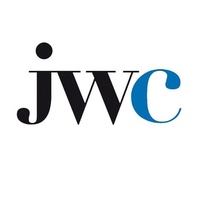- Macroeconomic and exhibition industry performance
- Global GDP is expected to rise by 6% in 2021, rebounding from a drop of -3.3% in 2020. The global economic recovery from the Covid-19 pandemic is asymmetric: China is the only major economy which grew in 2020 and which will return to pre-crisis levels in 2021, with the US recovering the quickest among Western states.
- Inflation is picking up in the post-pandemic recovery from persistently low levels. At the same time, Covid has accelerated the rise in global indebtedness. Government budget deficits have exceeded 10% of GDP for most economies in 2020 and are expected to remain high in 2021 and 2022.
- Unlike previous crises, Covid-19 has had an asymmetric impact across different sectors of the economy. Activity in the high-contact sectors, deeply affected by lockdown measures (e.g., retail, hospitality), remains far below pre-crisis levels, whereas low-contact service sectors have almost fully recovered.
- The travel- and hospitality-related sectors have been severely hit by the crisis, with a return to pre-crisis levels not predicted before 2024. Airline capacity is down 39% (as of Apr. 2021), international tourism is down 87% (as of Jan. 2021) and hotel bookings are down 46% (as of Feb. 2021). MICE event spending in Europe dropped 80% in 2020. In the US, employment in convention and trade shows has contracted the most across the travel-related sectors.
- The critical factor in the global recovery is the speed of vaccination, which has been asymmetric across the developed and emerging countries. Global vaccination coverage – also providing protection against variants of the virus – is a key prerequisite for a full return of international business travel and international events. This uncertainty will remain predominant in the near future.
- The global exhibition market contracted by an estimated 73% in net rented space to 28.5 million m² in 2020. Most of the space was rented out in Europe (39%), followed by Asia (27%) and North America (26%). The Asian market contracted slightly less than Europe (74%) with regards to net rented space, experiencing an overall decrease of approximately 68%. Global exhibition revenues dropped by 68%, amounting to a market size of EUR 12 billion in 2020.
- The industry is facing strong headwinds in the short- to medium-term: Re-opening is complicated because of pandemic-related uncertainties, whilst additional costs for Covid-related safety measures coupled with lower participation will exert high pressure on margins. Shows that rely on international visitors, such as leading international shows and export-oriented shows are particularly impacted whilst shows targeting mainly domestic or regional audiences will recover quickest. In more general terms, the pandemic has changed the definition of “must-attend events”.
- Exhibition companies must take wide-ranging actions in a continued response to the crisis. When reacting appropriately, they have the capacity to emerge revitalized, with leaner cost structures, an elevated value proposition through digital offerings, restructured portfolios and recomposed workforces.
- Markets in China, USA, Russia and the UK are more domestic and are therefore expected to perform best in the coming two years. Germany and Italy will likely face difficult recoveries.
- Financial performance of the Top-40 organizers
- For the first time in history, the performance of the exhibition industry is dissociated from global economic development. The top-40 companies have seen an overall revenue drop of 66% in 2020, with cumulated losses for 2020 amounting to a total of EUR 4.3 billion.
- The level of performance of the Top-40 companies varies greatly, and factors like the 2020 show calendar, insurance proceeds and the retention of deposits for rescheduled shows make comparisons difficult. Almost all companies lost at least 50% of their revenues, with some losing more than 80% in 2020.
- Informa Markets remains the market leader in 2020 with a total market share of 8%. Reed Exhibitions and GL Events follow with a share of 4% each; Messe Frankfurt accounts for 2%.
- The benchmarking of cost structures amongst German and European exhibition companies suggests that the most profitable companies are those that manage event-related and labour costs best.
- The Chinese exhibition market
- The outlook for the next two years is positive. Even though international participation will remain restricted for some time to come, many international companies are and will participate in events through their domestic sales or representative offices; the size and extent of the domestic participation will bring many events quickly back to pre-crisis levels. Market leading events in particular could return to pre-pandemic levels as early as 2021 or 2022, whereas some 2nd or 3rd tier events are likely to disappear.
- China is the country with the highest number of venues exceeding 100,000 m². A total of 274 venues are bigger than 10,000 m², with most of them owned by the Chinese government or SOE. China also boasts a large number of mega events exceeding 300,000 m² in gross exhibition space.
- Domestic organizers (such as CCPIT and CFTC) generate around 70% of the revenue from the Chinese market. The remaining 30% is split between nine major international groups that are currently doing business in China, of which Informa Markets is the biggest international organizer, ahead of Reed Exhibitions and Messe Frankfurt.
- The most important industry verticals in China are Automotive, Food & Beverages, Building Materials, Medicine & Healthcare and Home Furnishings.
- Venue capacity in China continues to increase, with 35 venues under construction and 12 venues in the planning process. Almost 5 million m² in venue capacity will be added to the already existing 11.6 million m². As of today, the three main economic clusters account for more than 40% of the total capacity.
- There is still room for new developments in China, especially to the west of the three major economic clusters. Best practice examples indicate that China is not ”one single” market but rather a country with vastly different regional markets, allowing for the cloning shows in different regions of the country.
- An overleveraged financial system and an increasing national focus on the part of the Chinese government could pose threats to future growth, especially for international organizers.
- Rush into virtual and omnichannel business model
- Digital transformation is affecting the exhibition industry in two main ways: with event-related technologies, such as smart badging or smartphone apps that aim to make physical participation easier and more successful and secondly, through platform-based online offerings, such as online matchmaking or virtual events, that elevate a show’s value proposition by adding complementary offerings all-year-long.
- Monetization of a digital event should not be the main goal when assessing the benefits of digital investments. Digital offerings can enhance and prolong the customer relationship, whilst helping to strengthen the physical event and provide opportunities to acquire new customers.
- The offer of virtual event platforms has increased exponentially throughout the pandemic. Funding for platform providers has exploded, underlining a fundamental shift in growth perspectives. Today, organizers can choose among many sophisticated platforms offering similar features for virtual, hybrid and in-person events. Incumbent industry service providers are starting to move into the virtual field by offering one-stop platforms at every stage of the event.
- Organizers can enhance an event’s value proposition by integrating physical and digital offerings along a consistent customer journey. Event organizers can provide communication and matchmaking services independent of time, medium and location. This enables exhibitors and visitors to interact, do business and learn: whenever and wherever they want.
- Based on the complementarity between physical and digital, a combination of physical trade shows with a 365-day accessible one-stop online platform can maximize value creation for both exhibitors and visitors and hence significantly increase their engagement with the industry community.
- The requirements for successful omnichannel models are high. To shift towards a customer-centric value proposition, a deep understanding of trends and customer needs in the underlying industry of an event, as well as perceived customer value is critical. To match value perception and pricing, exhibitor willingness to pay should be measured with the aim of establishing a seamless pricing scheme for both the digital and physical part of the offerings.
This is just a brief summary of the material available in this year’s GIPR, all of the above is supported by extensive data and analyses in the GIPR. If you would like to purchase a copy please see here: https://www.exhibitionworld.co.uk/global-industry-performance-review
If you would like further information on the GIPR or jwc, please contact us: info@jwc.eu.com
jwc is a leading consulting firm for the global exhibition and conference industry, covering the entire value chain from venue planning and feasibility studies to strategy development, performance improvement and pricing of exhibition or conference services.
Our team offers a unique combination of practitioners with many years of practical experience in the industry and individuals with extensive experience in the consulting business.
Our clients are based in North America, Europe and Asia and comprise of venue owners and managers, organizers, governments, service providers, associations and private equity firms.
jwc’s head office is located in Cologne, Germany, with offices in Hong Kong and Shenzhen.



Leave A Comment